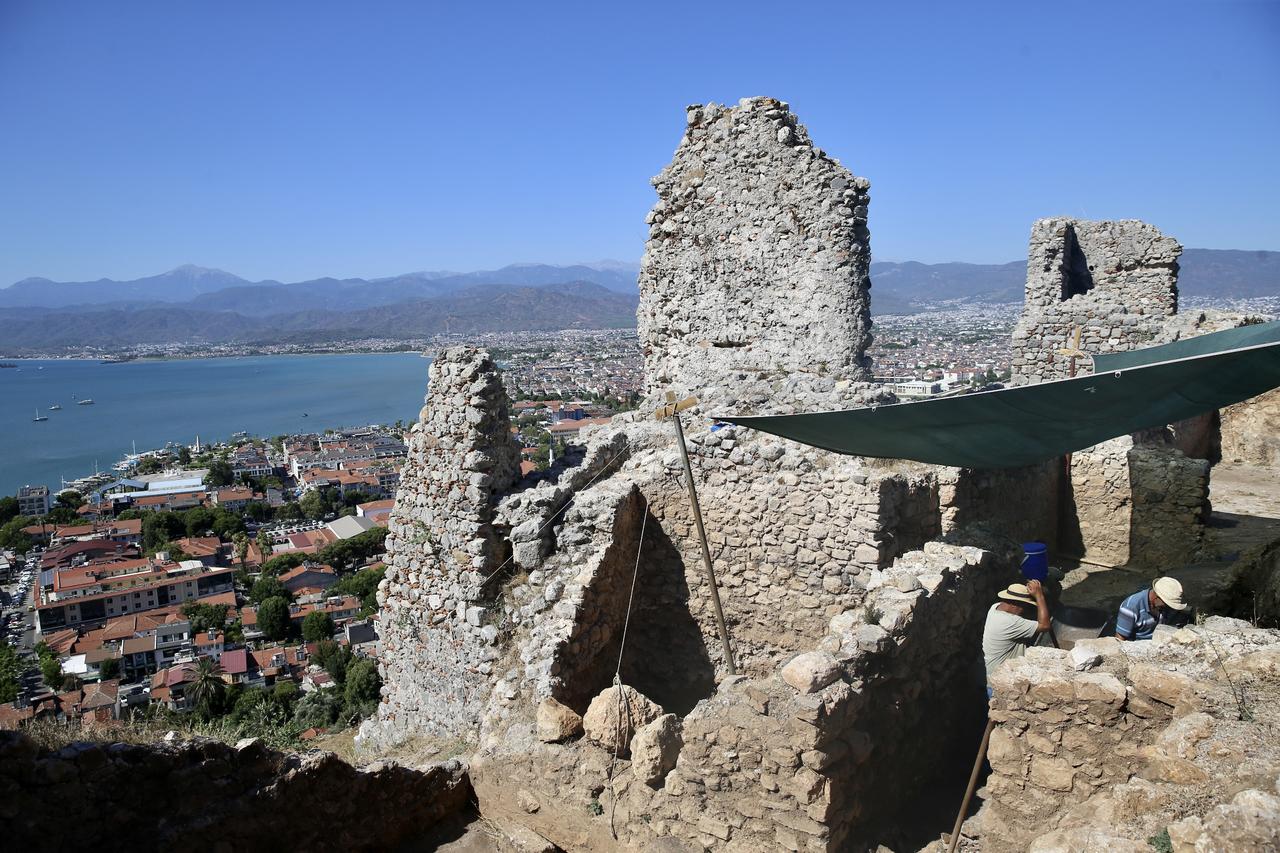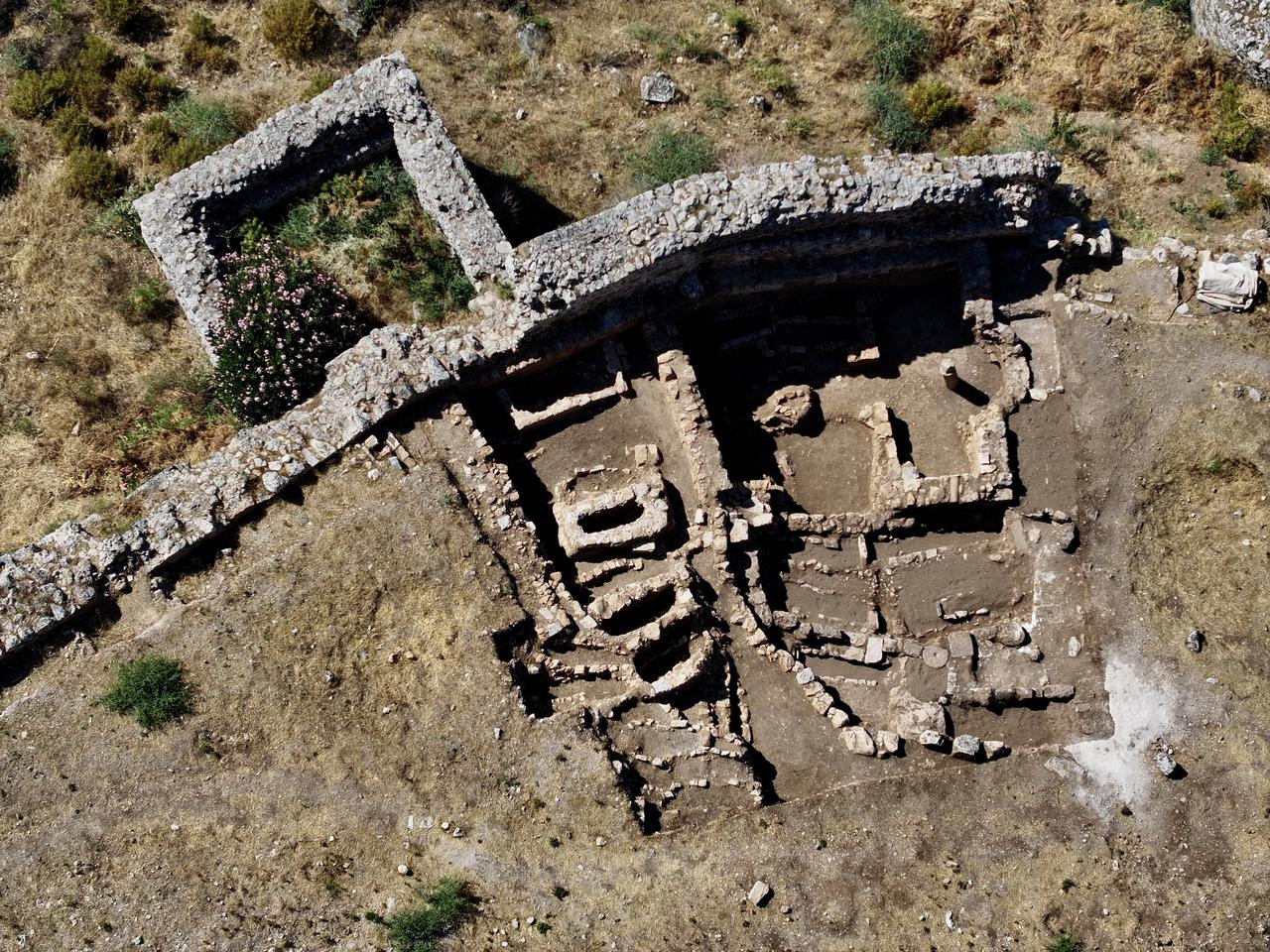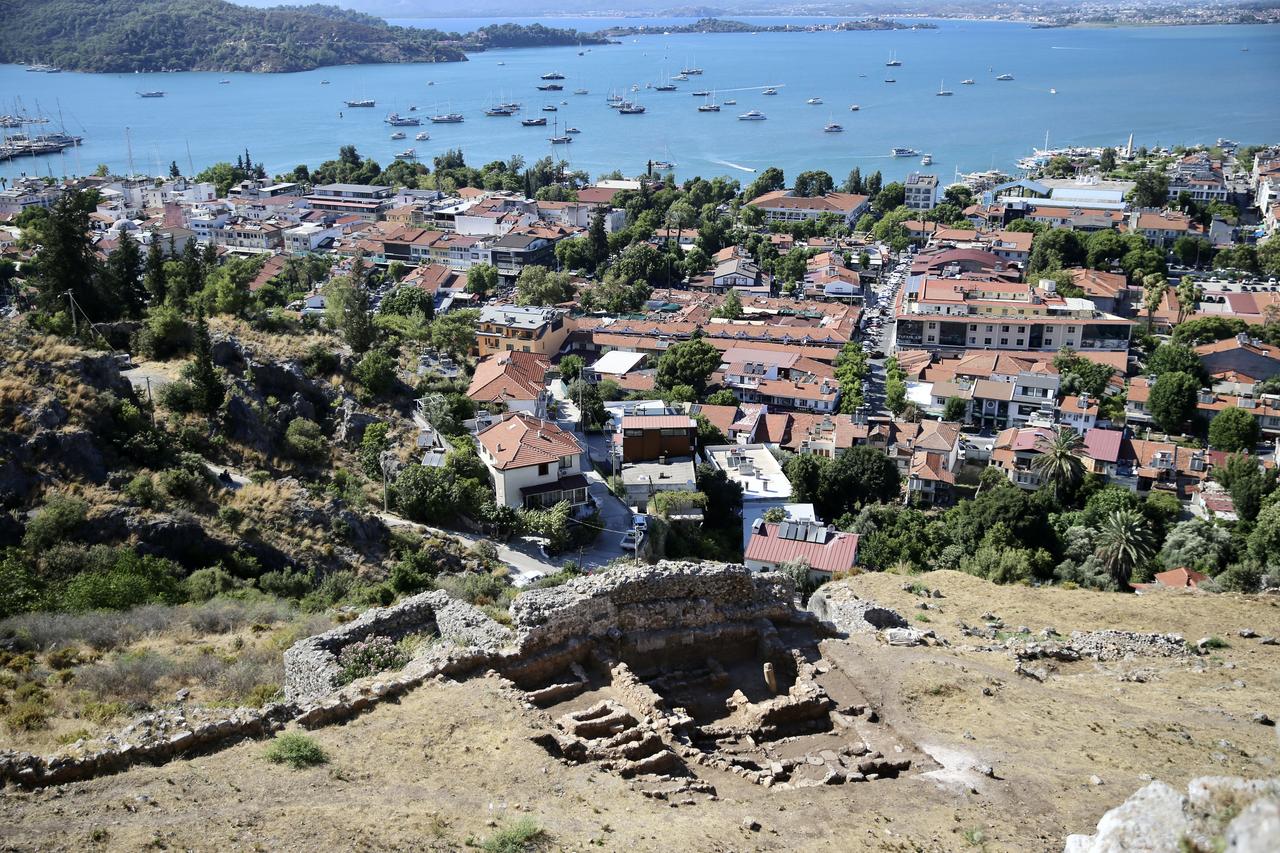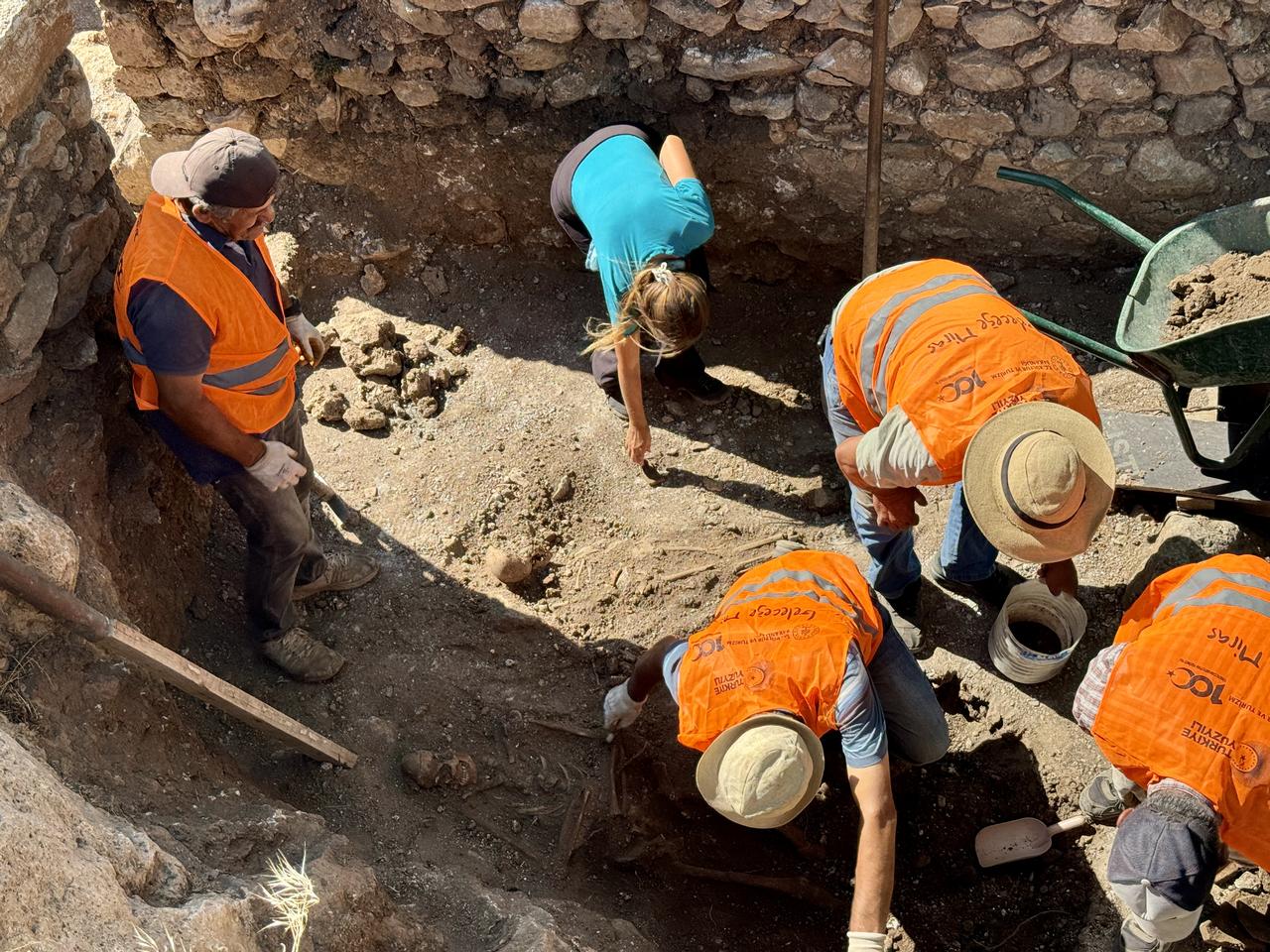
A recently uncovered chapel within the centuries-old Fethiye Castle in southwestern Türkiye is undergoing restoration as part of broader efforts to open the site to tourism.
The discovery was made during ongoing excavations, which are backed by the Turkish Ministry of Culture and Tourism and are carried out under the scientific supervision of Professor Kadir Pektas.

The excavations at Fethiye Castle, located in Mugla Province and overlooking the scenic Fethiye Gulf, are part of the "Heritage for the Future" project. Under the coordination of the General Directorate of Cultural Heritage and Museums and in collaboration with the Mugla Governor’s Office, the local municipality, and the Fethiye Museum, work is underway in both the upper and lower sections of the medieval fortress.
Professor Pektas, who leads the scientific team, stated that remains of a chapel were found in the lower section of the castle near the base of the walls.
Although the exact date of the structure has yet to be determined, initial findings suggest a Middle Byzantine period. Pektas noted that once excavation work expands in this area, researchers expect to gain more definitive information about the building's age and purpose.

The chapel was constructed adjacent to the outer fortification walls, in a location that offers an open view of the Fethiye Gulf and the surrounding district. According to Pektas, “A beautiful spot has been chosen for the chapel in terms of its scenery.” Though currently modest in size, there is speculation that further digging may uncover a larger structure than initially expected.
Excavations inside and around the chapel also revealed several graves from the Byzantine era, while other parts of the site have produced traces of Menteshe and Ottoman-period architecture. In the upper parts of the castle, researchers have found additional buildings and remains linked to these later historical phases.

Two recently uncovered human skeletons have raised interest, although there is no evidence so far to suggest the area served as a formal cemetery. These remains are being carefully examined to determine their context.
Professor Pektas emphasized that once the chapel excavation is completed, conservation efforts will begin. The long-term goal is to stabilize and restore the structure so that it can be integrated into a broader visitor route within the site.
This initiative will include a landscape planning project to make the historic site more accessible to tourists and better highlight its cultural and architectural features.
By restoring the chapel and surrounding areas, the project aims to transform the interior parts of Fethiye into a distinctive destination that combines natural scenery with the region’s layered historical legacy.